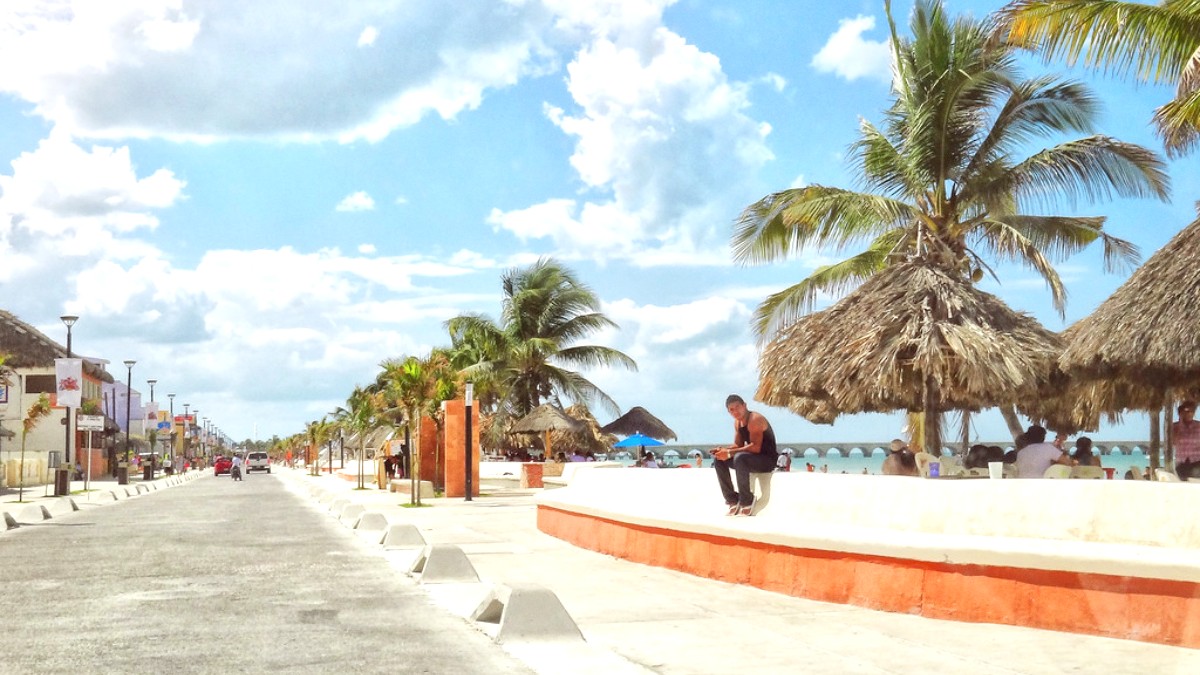
Yucatan Peninsula, Mexico
The Progreso Pier (Muelle de Progreso / Puerto de Altura) is the longest pier in Mexico, extending over 6.5 kilometers (4 miles) into the Gulf. It was built to support the export of henequen and other goods from Yucatán.
The pier represents Progreso's historical and ongoing role as a maritime gateway for large cargo and cruise ships. The Malecón, recently extended, provides a long stretch for walking, cycling, and Gulf views.
Formal guided tours for Progreso itself are limited; most focus on nearby destinations.
An active lighthouse, providing a historical beacon for ships and panoramic views from its top (access varies).
Various statues along the Malecón commemorate local figures, maritime history, or significant events.
The Progreso Pier itself is a powerful monument to the region's henequen industry and maritime history, continuing its industrial legacy as an active port.
The pier's construction was an engineering feat supporting the past export economy.
The Malecón functions as a hub of activity with restaurants, souvenir shops, and street vendors, especially on weekends and cruise ship days.
Progreso offers an unique museum experience related to its geological past.
Opened in 2023 on the Malecón. Focuses on the Chicxulub meteorite impact that led to dinosaur extinction.
Features interactive exhibits, impressive dinosaur models, and scientific information about the impact's effects on the region's geology.
This museum presents an educational and engaging experience for all ages.
Local cultural center occasionally presents local art exhibits, workshops, and cultural events.
Its schedule changes, so check locally for current programming during your visit.
The Malecón often presents an outdoor stage for occasional free concerts and cultural performances, especially on weekends or holidays.
Art galleries and dedicated exhibition spaces are limited in Progreso. Some local artists may display their work in small shops or at special Casa de la Cultura events.
The Meteorite Museum serves as Progreso's most significant specialized museum, focusing on a geological event with global implications.
Check local listings or the Progreso tourism website for any temporary exhibits or special programming at the Museo del Meteorito or Casa de la Cultura.
While Progreso has its unique cultural points, Mérida offers a much richer and more extensive array of cultural institutions and experiences.
Explore the rich history of the Yucatán from Progreso, though major archaeological sites are not directly in the city.
Progreso serves as a convenient base for exploring several significant Mayan sites in the Yucatán Peninsula.
No major Mayan archaeological sites are situated directly in Progreso. However, the region surrounding Progreso holds significant historical treasures.
Progreso's own historical architecture dates mostly from the late 19th and early 20th centuries, reflecting its boom era. For colonial history, Mérida is the place to go.
Progreso's history is deeply intertwined with its port and industrial activities, mainly the henequen trade.
For a comprehensive historical experience beyond Progreso, a trip to Mérida is highly recommended.
Progreso's natural appeal lies in its Gulf waters and proximity to unique ecosystems.
The main natural attraction in Progreso. Sunrises and sunsets over the calm Gulf waters are especially beautiful, offering tranquil viewing opportunities.
A smaller, accessible nature reserve just a short boat ride from the Progreso pier area. Features mangroves, cenotes ("ojos de agua"), and opportunities to see raccoons and various birds.
Approximately 1.5-2 hours west of Progreso, famous for its large flamingo population (especially Nov-Mar). Boat tours through mangroves offer views of birds and crocodiles.
Progreso Beach (along the Malecón) has calm, shallow waters, suitable for swimming and families. Beaches of Chelem & Chuburná (west of Progreso) are quieter and less developed.
Parque Principal provides green spaces, benches, and shade trees. The Malecón itself functions as an open space for recreation and Gulf views.
The Yucatán Peninsula is famous for its cenotes (natural sinkholes). Cenote X'lacah at Dzibilchaltún is the closest from Progreso. Hundreds of others are scattered across the region, offering unique swimming experiences.
Find cenote tours and tickets on GetYourGuide.The Yucatán Peninsula is a vast limestone platform with underground rivers and cenotes. This geology results from the Chicxulub meteorite impact.
No major natural lakes or rivers are situated directly in Progreso or the immediate vicinity, as the region's water system is mainly underground.
While Progreso focuses on coastal nature, Mérida presents more traditional park environments and is a gateway to other regional natural sites.
Beyond Celestún and El Corchito, keep an eye out for local wildlife in Progreso itself, especially birds.
Always swim in designated cenotes and follow all local guidelines. Some cenotes are part of private eco-parks and have entry fees and specific rules.
For more remote cenotes, it's advisable to visit with a local guide for safety and environmental awareness.
Discover lesser-known spots for a Progreso experience beyond the main tourist areas.
Explore natural reserves and unique local spots that are not always on the typical tourist itinerary.
Discover eateries and communities cherished by locals, often missed by typical visitors, and areas that are gaining popularity.
Beyond the main Malecón, there are stretches of beach that are less crowded and offer a more secluded experience.
Consider bringing your own water and snacks for these quieter spots.
Keep an eye out for local art and cultural expressions that pop up in unexpected places.
These fleeting moments provide an authentic local flavor.
Beyond the main municipal market, smaller, informal markets or pop-up sales sometimes occur.
These are true local experiences, far from the tourist track.
Early morning scenes of fishermen bringing in their catch or repairing nets at the harbor. The colors of their boats against the sunrise provide stunning shots.
Capture the lively energy of the Malecón: families strolling, vendors selling marquesitas, kitesurfers on the water, or the iconic Progreso letters at sunset.
In cenotes like X'lacah, look for moments when sunlight penetrates the water, creating stunning light rays, especially beautiful in the late morning or early afternoon.